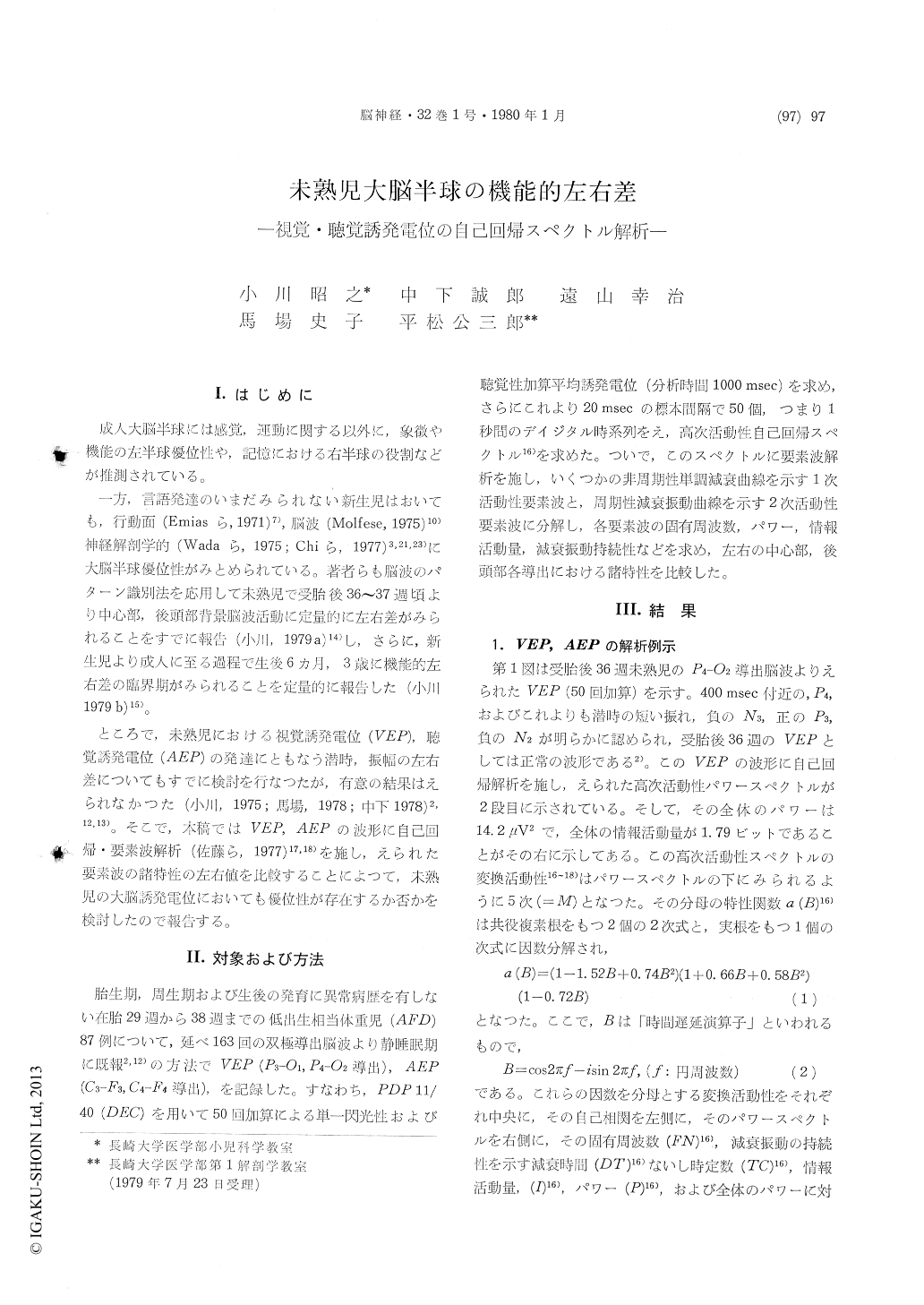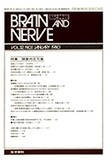Japanese
English
- 有料閲覧
- Abstract 文献概要
- 1ページ目 Look Inside
I.はじめに
成人大脳半球には感覚,運動に関する以外に,象徴や機能の左半球優位性や,記憶における右半球の役割などが推測されている。
一方,言語発達のいまだみられない新生児はおいても,行動面(Emiasら,1971)7),脳波(Molfese,1975)10)神経解剖学的(Wadaら,1975;Chiら,1977)3,21,23)に大脳半球優位性がみとめられている。著者らも脳波のパターン識別法を応用して未熟児で受胎後36〜37週頃より中心部,後頭部背景脳波活動に定量的に左右差がみられることをすでに報告(小川,1979a)14)し,さらに,新生児より成人に至る過程で生後6ヵ月,3歳に機能的左右差の臨界期がみられることを定量的に報告した(小川1979b)15)。
To know the hemispheric dominates of developing brain in click and flash stimuli, the autoregressive (AR) analysis of evoked potentials (EPs) in 87 cases of preterm infants at the postconceptional age during 31 to 42 weeks were performed. The records were obtained with polygraphy from scalp electrodes at bipolar P3-O1, P4-O2, C3-F3 and C4-F4 regions according to the 10-20 international system during the natural, quiet sleep stage. These records were averaged into a single 50 stimuli averaged visual or auditory evoked potentials (VEP or AEP) from each recording area. Then, the 1-sec. EPs were digitized at 50 samples/sec. and the AR-power spectrum and their component were calculated with minicomputer PDP 11/40. The component consisted of the first and the second order ele-mentary processes. The former showed a transient monoscillatory wave, whereas the latter showed damped oscillatory waves of delta, theta, alpha andbeta rhythms in EPs. The characteristics of these component rhythms in the EPs were given by frequency, power, time constant of the non-oscillatory delta, the damping time of the oscilla-tory component waves (time constant of the enve-lope of the damped oscillation) and the mutual information amount, etc. The results were as follows:
1) The EPs of all infants showed major oscilla-tion in the range of 0.5-10 Hz and usually were centred at about 1-5 Hz. Therfore, the comparison of these parameters were confined to the 1-5 Hz spectral component which contained this dominant frequency.
2) The left temporal power-intensity and infor-mation amount became significantly greater than the right for click stimuli from 40-42 weeks of postconceptional age.
3) The right occipital power-intensity and infor-mation amount showed significantly greater than the left for flash stimuli from 34-36 weeks of postconceptional age.
4) The hemispheric differences of damping time became insignifficant.
The above results show hemispheric asymmetries of power spectra in the EPS in preterm infants. In addition, anatomical differences between the left-and right-temporal areas have been reported in neonatal brains (Wada, 1969). Consequently, hemi-spheric asymmetries may be related to more funda-mental processes than language, and indicates that infant is born with a preprogrammed biological capacity to process the visuo-spatial information in the right-hemisphere and the sequential-analytic information in the left-hemisphere each other.

Copyright © 1980, Igaku-Shoin Ltd. All rights reserved.


